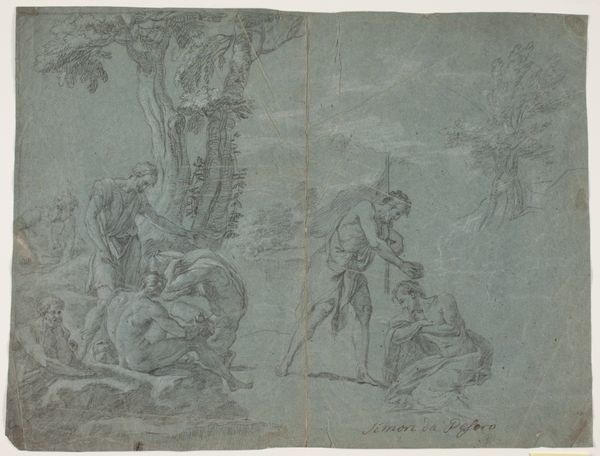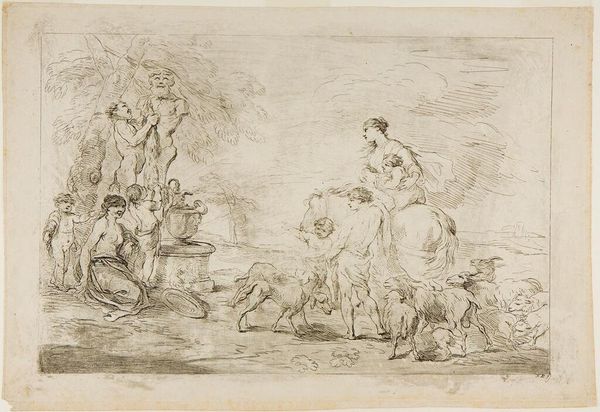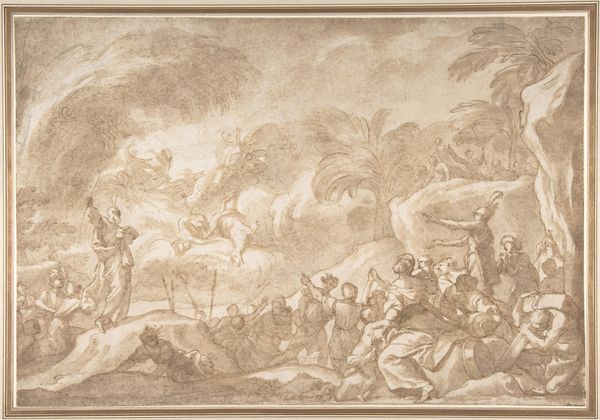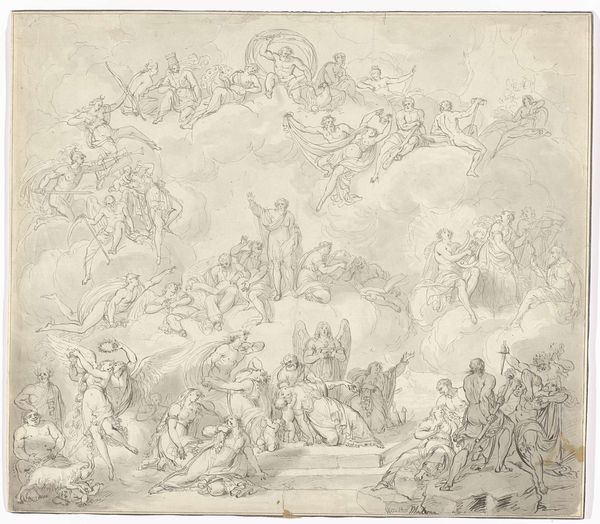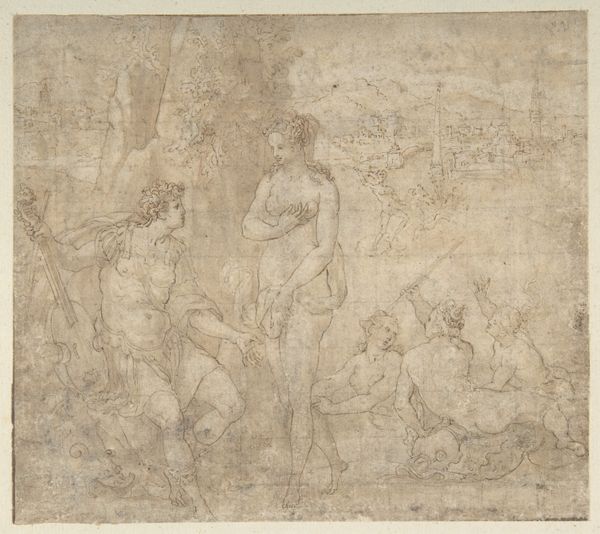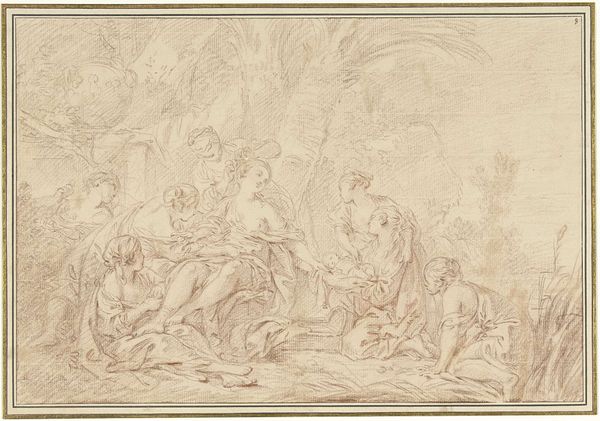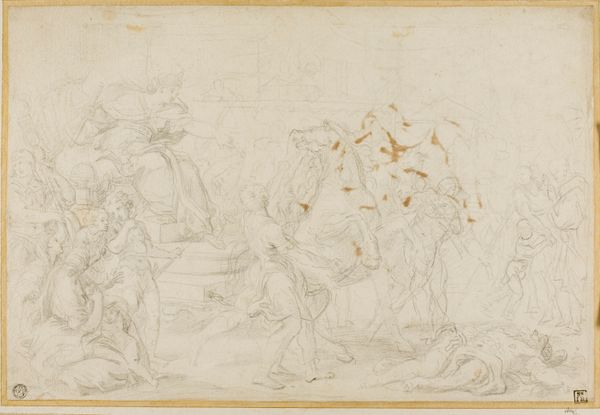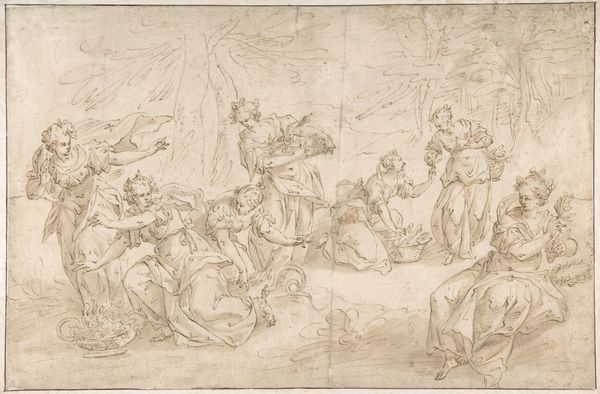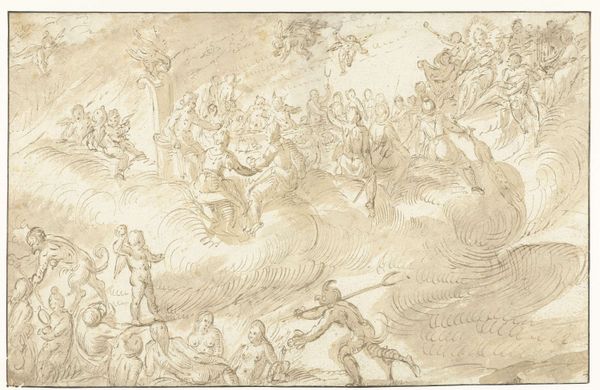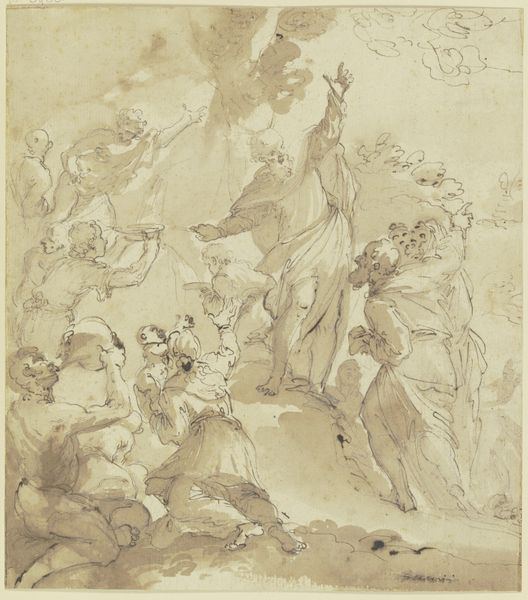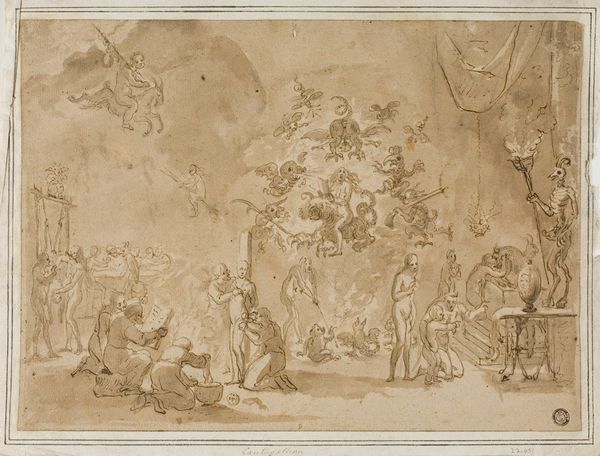
drawing, paper, graphite
#
drawing
#
the-ancients
#
landscape
#
figuration
#
paper
#
11_renaissance
#
line
#
graphite
#
history-painting
#
northern-renaissance
Dimensions: 374 × 464 mm
Copyright: Public Domain
Editor: This drawing, "Abraham's Sacrifice of Isaac," is attributed to Giacinto Calandrucci. It’s undated, made with graphite on paper, and it has an almost ethereal quality to it because of the soft lines. I’m particularly struck by the contrast between the dynamic figures of Abraham and the angel and the static altar. What visual elements stand out to you most in this work? Curator: The interplay between line and space is paramount. Note how Calandrucci employs hatching and cross-hatching, creating tonal variations that suggest depth and volume. The dynamism you observe stems directly from this skillful manipulation of line weight. The angel's swirling drapery, for example, is achieved through a dense network of fine lines, imparting a sense of ethereal movement. What of the composition’s balance, or lack thereof? Editor: I see what you mean about the angel's drapery, and now it feels like the angel is really intervening. I suppose the imbalance you are talking about is because the left side, with the angel and the ram, feels so much more active than the relatively still figures by the altar. Is there significance in this asymmetry? Curator: Perhaps not definitive significance, but certainly structural import. The imbalance serves to draw the eye, guiding our perception through the narrative. Consider, too, the strategic placement of light and shadow. The areas of greatest contrast highlight the key actors—Abraham, Isaac, and the angel—while the surrounding landscape remains comparatively muted, directing our attention to the central drama. What do you observe about the artist’s handling of perspective? Editor: It appears that Calandrucci wasn’s aiming for precise perspective; the background figures seem somewhat flattened and the altar lacks a real sense of depth. Perhaps he prioritized the emotional impact of the scene over technical accuracy? Curator: Precisely! This "distortion," if we can call it that, contributes to the overall expressiveness of the drawing. It prioritizes the thematic weight of the scene over strict illusionism. The drawing thereby achieves its symbolic aims. Editor: I never thought about the distortion enhancing the scene, but that makes perfect sense! Looking at the artist’s stylistic choices makes me appreciate the expressiveness even more. Curator: Indeed, examining the formal elements allows for a deeper comprehension of the artwork’s intent.
Comments
No comments
Be the first to comment and join the conversation on the ultimate creative platform.


